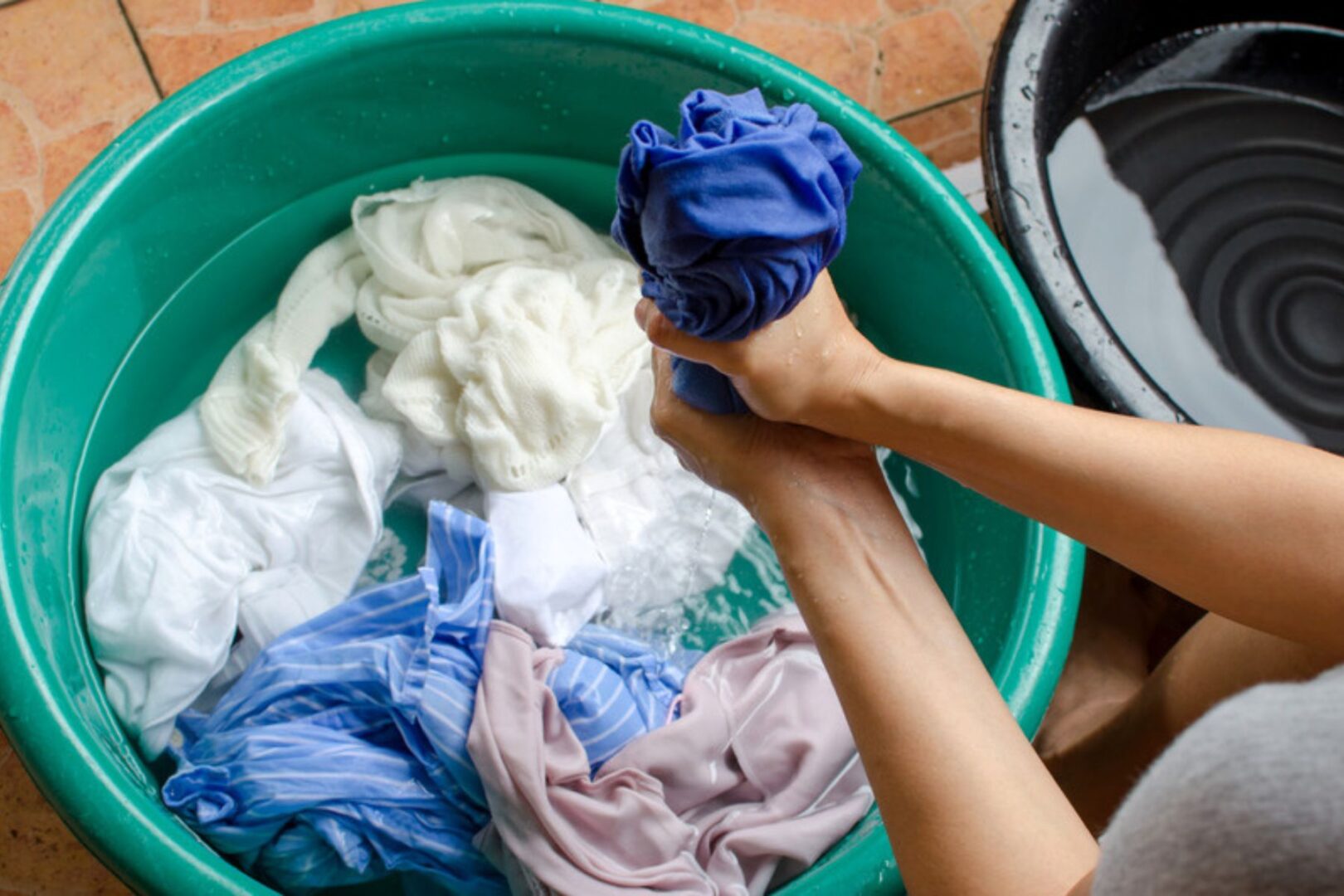Introduction
Sarees are a beautiful part of our culture and are often cherished heirlooms. So, it’s crucial to handle their cleaning with utmost care.
While machine washing has become a common and convenient option for many households, we often wonder if it suits our designer sarees cleaning.
It’s essential to understand that each method has its pros and cons. While machine washing may seem convenient, it can pose risks of colour bleeding, shrinkage, or damage to delicate embroidery. On the other hand, while gentle on fabrics, dry cleaning might not be suitable for sarees with intricate beadwork or sequins.
So, what’s the actual solution? Let’s see!
Scared Of Ruining Your Designer Saree? Try Quiclo!
Are you scared of ruining your designer sarees? Do you need help cleaning them? Don’t worry; we have the perfect solution for you!
At Quiclo Laundry, we have a team of skilled experts who use advanced German technology to take care of your designer sarees. They make sure to treat your sarees with great care at every step. Whether it’s picking up your sarees from your doorstep or delivering them back to you within 48 hours, you can trust us for all your saree laundry needs!
To schedule an appointment, you can call us at 080-68322433 or download our app from Playstore/AppStore. Give us a try today!
Machine Wash Or Dry Cleaning: Which One Is Better For Your Designer Saree?

The decision to choose between machine washing and dry cleaning is crucial for preserving the beauty and longevity of your designer saree. Both methods have pros and cons, and understanding them can help you make the best decision.
Machine washing is convenient and can save time, but it is not without risks. Washing machine turbulence and powerful chemicals can lead to damage, colour fading, or loss of decorative elements on delicate sarees. Furthermore, certain materials, such as silk or heavily embroidered sarees, may not adapt well to machine washing.
On the other hand, dry cleaning uses a gentle chemical solvent that eliminates dirt and stains without harming the saree’s exquisite features. This method is especially suitable for sarees with delicate materials and embellishments.
Finally, the best way to care for your designer saree is determined by the fabric, its artwork, and care guidelines provided by the manufacturer.
Opt for professional dry cleaning for added security and to keep it in excellent shape. Always prioritise the saree’s care and use the proper cleaning method to keep its beauty for a prolonged time.
Is Hand Wash an Option?

Yes, hand washing is a good option for cleaning your designer saree, especially if you want to take special care.
A careful touch with a light shampoo can clean the saree effectively and without causing damage. Even if you don’t rub it, you can still soak it in shampoo water for some time. Excessive rubbing or wringing is generally discouraged since it might strain or break delicate fabrics.
After washing, gently squeeze out the water and prevent drying in direct sunlight. For certain sarees, hand washing can be a safe and effective alternative to machine washing or dry cleaning. However, always double-check the care instructions and fabric type to ensure it’s the best choice for your favourite saree.
5 Tips to Take Care of Your Designer Saree

Taking care of your designer saree is essential to preserve its beauty and longevity. Here are five tips to ensure your saree stays in pristine condition:
1. Proper storage: Keep your designer saree away from direct sunlight in a dry, cool place. Use breathable fabric coverings like muslin cloth to protect it from dust and moisture.
Avoid hanging heavy sarees to prevent stretching; instead, fold them neatly.
2. Avoid using strong perfumes or deodorants: When wearing a saree, avoid using strong fragrances or deodorants, especially if the cloth is delicate. Certain chemicals in these items can cause fabric damage or discolouration.
3. Frequent airings: After wearing your saree, give it a rest. Before storing it, hang it freely in an open area for a few hours. This method removes lingering odours and relaxes the fabric, minimising creases.
4. Use soft padding for embroidery: Place soft cushioning, such as butter paper or tissue paper, between the folds of your saree to avoid snagging or scratching. This layer of protection protects the decorations and maintains them in place over time.
5. Avoid heat and direct sunlight: Iron your designer saree on low heat only, especially if it has delicate embroidery. Always iron at a low temperature or with a towel between the saree and the iron.
By following these five tips, you can ensure your designer saree remains timeless, radiating elegance and grace on every occasion.
How to Dry Your Designer Saree at Home
To retain the quality of your designer saree, you must dry it at home. Without wringing, gently squeeze off excess water after hand washing or spot cleaning. Place the saree flat on a clean, dry towel and roll it up to absorb any excess moisture.
Next, look for a shady spot with sufficient airflow to hang the saree. Direct sunlight should be avoided as it can cause colour fading. Use a wide, padded hanger to distribute the saree’s weight and minimise straining evenly.
To avoid snagging, ensure the saree is not in contact with rough surfaces or other clothing. Allow the saree to completely dry before storing it. Avoid using a dryer or ironing on high heat, as it may damage the fabric and embellishments.
Following these instructions will allow you to safely dry your designer saree at home, preserving it in pristine shape for the next special occasion.
Conclusion
When caring for your precious designer saree, understanding the differences between machine washing and dry cleaning is essential.
Machine washing may offer convenience, but it carries a higher risk of potential damage, colour fading, and loss of embellishments.
On the other hand, while a bit more expensive, dry cleaning provides a safer and gentler approach, preserving the saree’s intricate details and fabric quality. Ultimately, the choice depends on the saree’s material, embellishments, and personal preferences.
Always follow the care instructions provided by the saree manufacturer, and if in doubt, consult a professional dry cleaner like Quiclo to ensure your saree remains in its pristine condition for years to come!
FAQs
1. How do you clean designer sarees?
It is best to first wash the border and pallu of the saree separately. And then, in plain water, wash the saree two to three times. Immediately use a very light detergent to clean the saree after that. Using a brush or lash on a saree can only cause the fabric to rip; therefore, avoid doing so.
2. Is dry cleaning good for silk sarees?
Dry cleaning should be used for bright prints or bleed-through colours. Be sure to test every detail before washing, as the rich colours of silk can bleed. Check to see whether any colour comes off on a cotton swab by dipping it in mild laundry detergent and water.
3. How do you take care of an expensive saree?
Never ever wash silk sarees in a washing machine. Hand wash the silk saree carefully, adding a pinch of rock salt and a few drops of lemon juice to the zari and body of the saree.
4. Can you machine wash and dry silk?
Silk can certainly be washed in a machine, but it is not recommended. Silk has a tendency to struggle with the machine drum’s ongoing turning motion as it is such a fragile fabric.
5. Can I wash Kanjivaram saree at home?
Use cold water and a small amount of shampoo only after the first three washes if you do decide to wash your Kanjivaram saree at home.











0 Comments